Hockey stick or hockey league?
Posted on 31 October 2010 by John Cook
When most people refer to the 'hockey stick', they refer to its earliest incarnation - a temperature proxy by Mann, Bradley and Hughes created back in 1998 (Mann et al 1998). But in the climate change experienced over the last 1000 years, there are many hockey sticks. The amount of carbon dioxide emitted by humans, mostly through the burning over fossil fuels, has a distinct hockey stick shape over the last 1000 years.
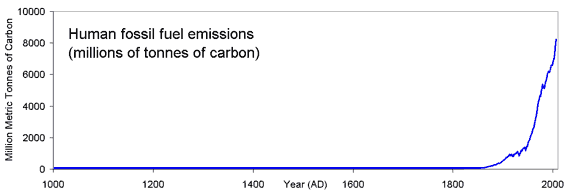
Figure 1: Human carbon dioxide emissions, measured in million metric tonnes of carbon (CDIAC).
The dramatic increase in CO2 emissions is matched by a steep rise in atmospheric CO2 levels. CO2 levels have risen around 40% since pre-industrial levels and currently sit at around 386 parts per million, a level unseen for at least 15 million years (Tripati 2009).
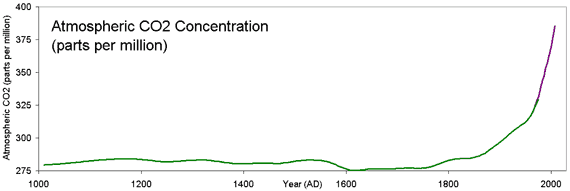
Figure 2: Atmospheric CO2 concentration. (Green - Law Dome, East Antarctica and Purple - Mauna Loa, Hawaii).
Climate forcing is a change in the planet’s energy balance - when our climate builds up or loses heat. There are various climate forcings that drive global temperature change - variations in solar output, aerosol levels and carbon dioxide have been the major drivers of long-term climate change over the last 1000 years. The combined climate forcing from these effects shows a familiar shape.
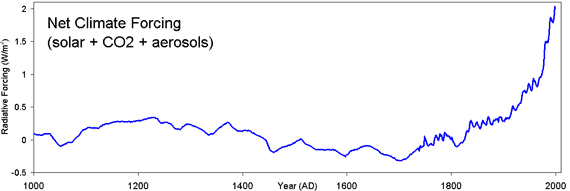
Figure 3: Combined radiative forcing from solar variations, carbon dioxide and aerosols - volcanoes are omitted (Crowley 2000).
The increase in positive climate forcing means our climate has been building up heat in recent times. Consequently, we see the corresponding shape in Northern Hemisphere land temperature:
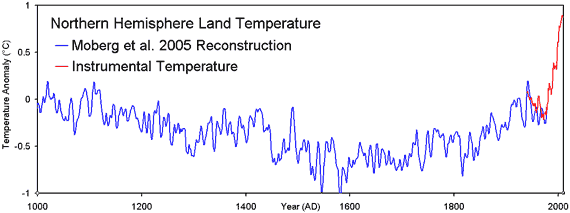
Figure 4: Northern hemisphere temperature reconstruction (Moberg et al 2005) plus a 5 year average of instrumental measurements of northern hemisphere land temperature (CRUTemp).
Over the last decade, a number of independent studies have reconstructed temperature over the last 1000 years, using a multitude of different proxy data and various data analysis techniques. They all tell a similar story.
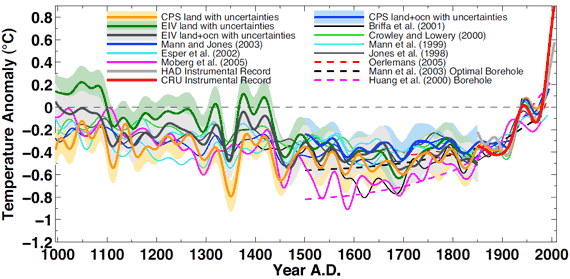
Figure 5: Various northern hemisphere temperature reconstructions (Mann et al 2008).
The original 1998 hockey stick by Mann, Bradley and Hughes didn't prove that humans are causing global warming. The evidence for man-made global warming lies in the multiple lines of empirical evidence finding human fingerprints throughout climate change. But the multitude of hockey sticks (or hockey league) do tell a story - humans have caused a profound disturbance to our climate system. To say "the hockey stick is broken" is to ignore the full body of evidence of hockey sticks throughout climate change.































 Arguments
Arguments






























Because CO2 is a greenhouse gas that traps heat. So when we emit billions of tonnes of a greenhouse gas into the air, we expect to see warming occur. And it has. The fact that CO2 emissions and temperature show similar hockey sticks isn't the only case for human-caused global warming, of course. Corroborating this is many independent observations finding human fingerprints throughout climate change.
The lesson here is that to properly understand climate, you need to consider the full body of evidence as a whole. Don't get hung up on a single bit of data like the hockey stick. That's just one piece of the puzzle amongst the many lines of evidence for human caused global warming.
Can anyone point me to a graph of temperature reconstructions longer than 1000 years?
[TD] Pages 2k for the past 2,000 years. Marcott for the past 11,000 years, Shakun for the previous years back to 20,000 years ago, shown together with recent instrumental records (click links there to get to their peer-reviewed papers, or use the Search box at the top left of this page to find more about them). But take care to not be misled by people who misinterpret or misrepresent Greenland ice core data.